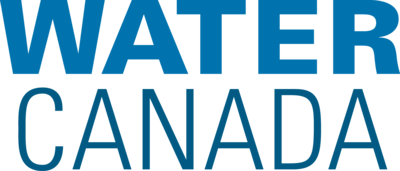WC144 SeptOct 2025 - Magazine - Page 13

Reverse Osmosis (RO) and nanofiltration (NF) are very effective at removing nearly all PFAS, including short-chain variants. However,
these technologies are costly, energy-intensive, and create brine or
retentate that creates disposal challenges. They are more practical for point-of-use and small systems or used as polishing steps
following GAC or AIX. When compared to RO, NF has been
found to have lower removal rates for some PFAS.
Foam Fractionation is an emerging non-destructive technique.
Foam fractionation works by enriching PFAS into a stable foam
that forms during aeration. When coupled with GAC polishing,
combined PFAS concentrations can drop 50–60 per cent while
reducing activated carbon use. Foam fractionation is still being
tested for drinking water use.
Treating PFAS is only half the battle. Utilities must also
manage captured chemicals. Thermal destruction at ≥1,100 °C
remains the only reliable full-scale elimination method.
Advanced Oxidation Processes (AOPs) and UV-based treatments typically do not degrade PFAS due to the strength of carbon-fluorine
bonds. New combinations like UV-sulfite and UV-persulfate are
under study but remain in pilot stages. Optimized UV/hydrogen
peroxide advanced oxidation (AOP) can partially degrade PFAS
precursors. Some Canadian utilities are trialing AOP as a pretreatment step to improve PFAS removal.
Electrochemical oxidation (EO) and Plasma Technologies show
potential for breaking PFAS down into harmless end products.
EO uses high-voltage electrodes to generate oxidants that break
carbon–fluorine bonds. Pilots in Ontario reported up to 80–90
per cent destruction of PFOA. Though promising, its high energy
consumption and high capital cost are still challenging its fullscale application.
Thermal Treatment and Incineration are used to destroy PFAS-laden
residuals like spent GAC or resin. Proper combustion design and
monitoring are essential to avoid incomplete destruction and
airborne releases.
The converging pressures of regulation and PFAS science are
compelling a shift toward modular treatment trains. Typical
sequences include source profiling, pretreatment (AOP or foam),
GAC for long-chain PFAS, AIX for short-chain, RO/NF polishing, and robust residuals management.
Final thoughts
Conventional water treatment technologies, such as coagulation/
flocculation, sedimentation, filtration (granular/micro/ultra), and
oxidation, are generally not efficient nor sustainable for achieving
both the removal and destruction of PFAS compounds. GAC
adsorption, ion exchange, and high-pressure membrane technologies, such as NF and RO, have been reported to be effective
methods for removing PFAS from source water. Literature also
indicates that integrating multiple treatment methods, commonly
referred to as hybrid approaches, can enhance overall effectiveness
compared to the use of individual technologies in isolation.
As Canada moves closer to enforceable PFAS drinking water
guidelines, Canadian utilities and water professionals must act
proactively. Operators and water professionals will be central to
deploying these technologies effectively, so training and technical
capacity building should be prioritized. Governments and utilities
should also support collaborative pilot projects to advance practical, scalable solutions. Preparing now will help ease the transition
to a regulatory future that values public health, environmental
safety, and innovation.
Implementation considerations and future outlook
Selecting water treatment technology/technologies depends on
target PFAS types/concentration, water quality, treatment goals,
costs, operational complexity, and residual management. There’s
no universal solution. Each system requires site-specific assessment.
Municipalities should prepare for evolving regulations by characterizing their water sources, piloting viable technologies, and
planning for long-term sustainability. Evaluations should include
full life-cycle considerations like media handling, waste disposal,
and energy requirements.
WATER C AN ADA • SEP TEMBER/OCTOBER 2025
13